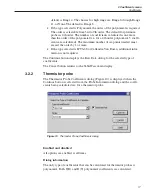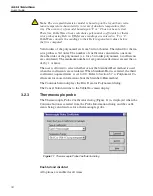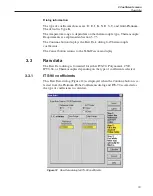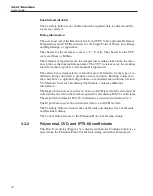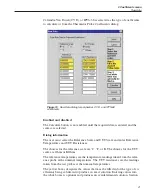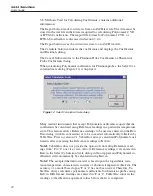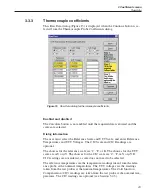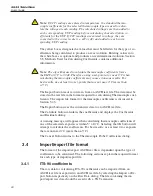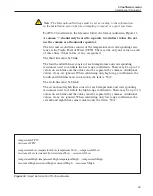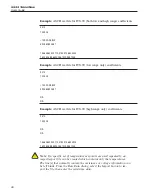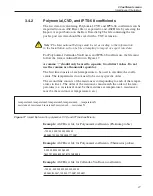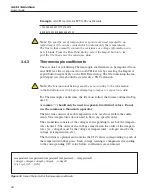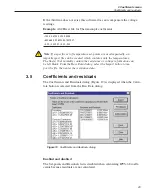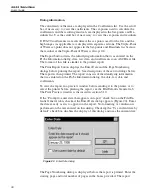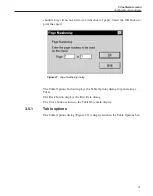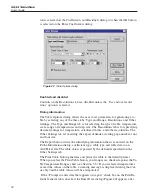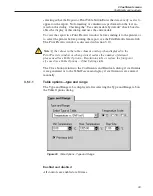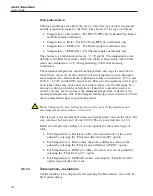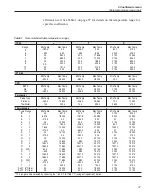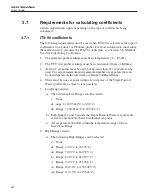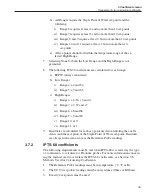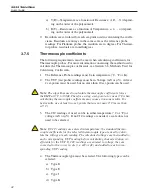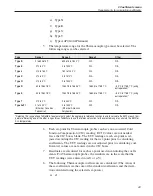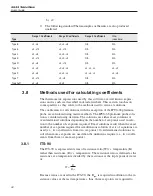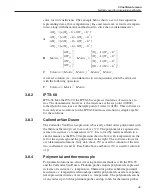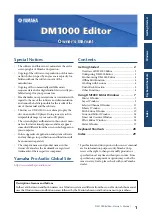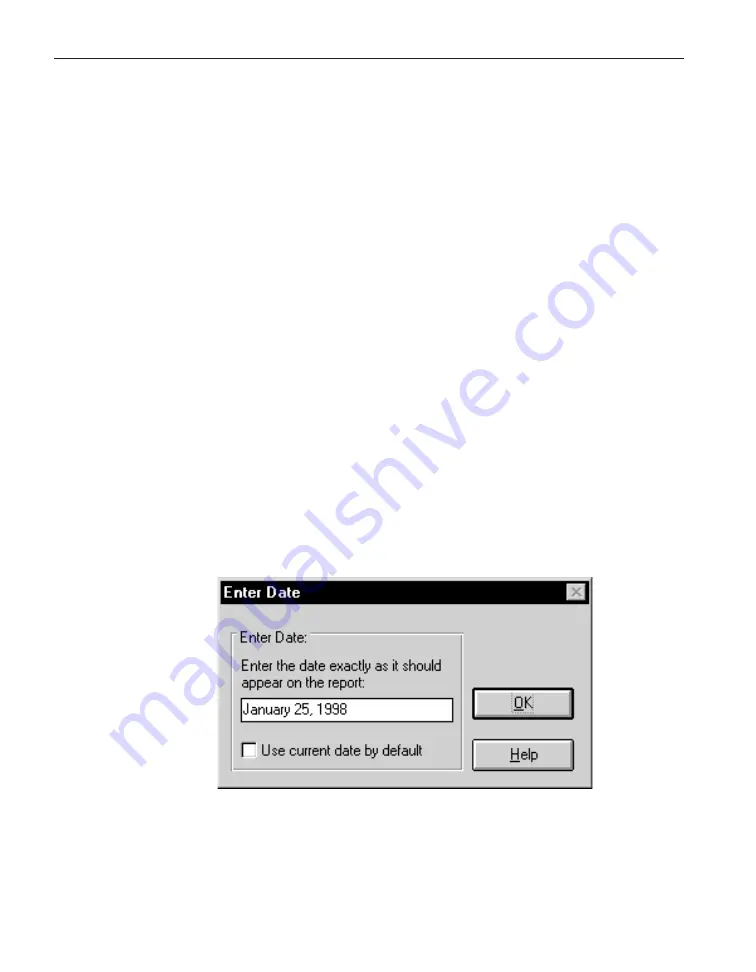
Dialog information
The calculated coefficients are displayed in the Coefficients list. Use the scroll
bar, if necessary, to view the coefficients. The set-points used to calculate the
coefficients and the resulting residuals are displayed in the Set-points and Re-
siduals list. Use the scroll bar, if necessary, to view the set-points and residuals.
If ITS-90 coefficients were calculated, the set-points used for the low and the
high ranges (as applicable) are displayed in separate sections. The Triple-Point
of Water set-point does not appear in the Set-points and Residuals list because
the residual at the Triple-Point of Water is always 0.0.
The Export button writes the identifying information that was entered on the
Probe Information dialog, date, raw data, and coefficients to an ASCII text file.
The format of this file is similar to the printed report.
The Print Report button displays the Enter Date and the Page Numbering
dialogs before printing the report. See descriptions of these two dialogs below.
The report is then printed. The report consists of the identifying information
that was entered on the Probe Information dialog, the date, raw data and
coefficients.
To view the report in a preview window before sending it to the printer, or to
select the printer before printing the report, see the File|Defaults General tab.
The Print Preview window is discussed in section 3.10.
If the “Prompt to enter date that appears on report” check box on the File|De-
faults General tab is checked, the Enter Date dialog appears (Figure 20). Enter
the date exactly as it is to appear on the report. No formatting or validation is
performed on the text entered on this dialog. Checking the “Use current date by
default” check box disables the display of this dialog and uses the current date.
The Page Numbering dialog is displayed before the report is printed. Enter the
starting page and total number of pages in the boxes provided. The report
9933 TableWare
User’s Guide
30
Figure 20
Enter Date dialog


